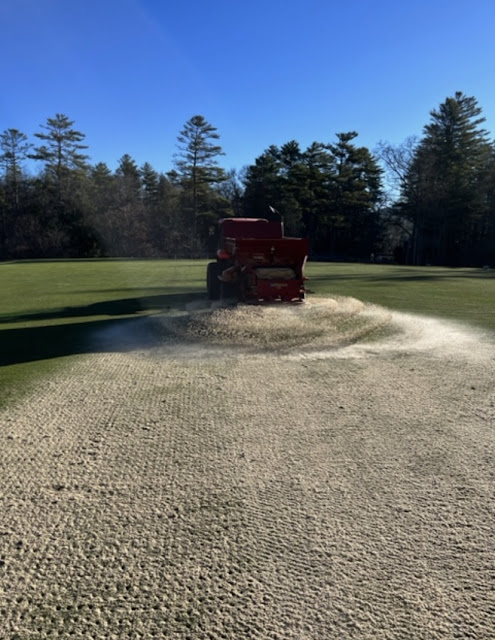Sand is applied at 5-ton increments so it has time to dry between applications. After it dries, we drag the sand with brushes before making another 5-ton sand application which is followed by the same procedure until all the sand (25 tons) is used up. What we want to avoid, is burying the grass with an inch or more of sand. While you can get away with doing that to warm-season grasses like Bermudagrass, cool-season grasses aren't as aggressive and can be negatively impacted by excessive amounts of sand.
As I mentioned in a prior post, it is really important that we incorporate as much sand as we possible can to the practice tee since we are using a compost product to fill divots, as opposed to sand medium. After 6 or 7 years of this practice, we've seen no adverse effects on drainage within the tee. In fact, the drainage has actually improved. Aerification not only dilutes organic matter that turf naturally produces, but the sand also settles in every low area, leveling the surface after a long season of constant use. I'm always amazed when I'm at the practice facility at night or during the early m0rning hours before the sun rises. Headlights, shining across the tee, exaggerate just how unlevel it can get after several months of use. However, following the application of 25 tons of sand and adequate dragging to help the sand settle into low spots and aerification holes, the tee will take on a smooth look. Once grass growth resumes in April/May, the tee will look like new, ready for another Highlands CC season. It is worth noting that since the 2018 practice facility redesign with architect, Beau Welling, the use of the facility continues to dramatically increase year after year. As you know, it's become a destination of sorts at the Club. While this is a positive for the Club, it becomes clear how important it is for us to manage the tee for maximum efficiency.

